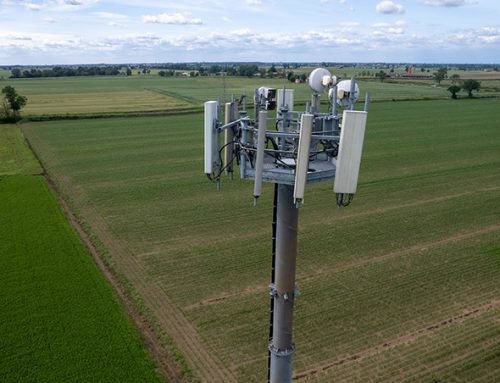In today’s increasingly virtualized world, CSPs too are shifting from a hardware-oriented model to software-based network functions. As per a 2023 study, organizations expect to reduce their investment in function specific hardware by nearly 50% in the next five years.
Instead, telcos expect to switch to virtualized network functions (VNFs) and cloud-native container network functions (CNFs) as they promise greater operational efficiencies, faster workload provisioning, and better network security for telcos.
However, the silos created by legacy hardware and the sheer complexity resulting from a large organizational footprint makes virtualization a demanding task. In this blog (part 3 of the 6-part blog series on telco cloud) we delve into few critical aspects that CSPs should consider for driving maximum value out of virtualization.
|
Challenges Impending Virtualization for Telcos
- A Large Transformation Exercise
The large footprint of central offices (COs) and points of presence (PoPs) makes the shift to virtualization a complex endeavour. Such large-scale movement from fixed function hardware networks to VNF/CNF means CSPs need to weigh in the pros and cons of a centralized or distributed deployment methods.
- Operational Challenges
Telcos need ensure their virtual platform provides redundancy for business continuity. Proper planning is key as CSPs face standardization and vendor lock-in issues as they approach NFV implementation.
- Traditional Telco Network Silos
Telcos traditionally depend on proprietary hardware for their network function. This has led to individual vendor silos, preventing CSPs from delivering in line with market demand, resulting in long deployment cycles for new network services.
- Virtualization Solutions Yet to Mature
Virtualization solutions, though popular, are in the early stages of development. Solutions provided by multiple vendors lack a common management framework, resulting in complex end-to-end service provisioning in both physical and virtual worlds.
- Telcos Unsure of Resource Needs
Telcos still struggle to determine the right sizing of computing, networking, and storage resources needed for network transformation. Testing and implementation of virtualization technologies in line with business and operational needs can consume significant time and resources.
Getting the Most Out of Virtualization: 6 Key Considerations
- Right Size Your Hardware, Include Redundancy
In a virtual environment, spinning up a VNF is much easier than provisioning physical hardware. However, without right sizing of hardware needs (CPU, processors, memory, networking), resource contention can hamper network performance.
To build a successful virtual environment, CSPs must focus on planning and dimensioning of infrastructure hardware to match virtual network requirements. One can be prudent and consider near-term requirements for resource planning and keep flexibility to add additional servers when needed.
However, physical hardware failure can and do happen. It is critical to build in redundancy of virtual infrastructures in design phase itself to minimize downtime and improve the resiliency in disaster recovery situations. A “N+1” redundancy approach works best in case each host runs multiple virtual machines (VMs). So, if one host fails, there’s one extra unit of physical server that can stand up and run the VMs.
CSPs can also employ a “backup to the backup” service for their critical nodes/infrastructure on the cloud.
- Prioritize Server Virtualization
There are different types of physical infrastructure that can be virtualized to deliver all the benefits of a virtualization technology. Server virtualization is often implemented before others to avoid hardware complexity. It helps partition a physical server into multiple virtual servers in an efficient and cost-effective manner.
Without server virtualization, all the hardware elements only use a part of their computing capacities, which leaves a portion of the physical servers idle. By virtualizing the servers, CSPs can allocate the necessary computing power, storage, and network bandwidth based on the needs of users and applications.
Additionally, server virtualization streamlines management tasks and reduces administrative overhead. An entire virtual environment can be monitored by CSPs from a single interface, simplifying monitoring of VMs.
- Use Templates for Faster Testing & Deployment
One of the biggest advantages for using virtualization is efficiency. A virtual server can set up in less time than manual installation by avoiding several repetitive installation and configuration tasks. For example, suppose there’s a need to create four VMs, and three of the four are used in production, one for temporary deployment of a service.
A manual set up would not only be a time and resource-intensive process, but error-prone due to the repetitive steps conducted during the installation of each VM. Virtualization overcomes this issue by using templates (a base line image for creating a virtual machine) with preconfigured elements for the production environment, and later, if needed, additional software can be installed before final deployment.
Similarly, the temporary service can be assembled using virtualization for a one-off project. For instance, virtual servers can create a temporary environment to conduct testing and development without affecting other virtual servers. After the project ends, the service can be torn down and cleaned up, freeing up the hardware resources.
- Continuously Monitor Your Virtualization Platform
Virtualization introduces additional layers of abstraction, making it difficult to track the health of the complete virtual environment. Monitoring the virtual servers with the same tools and techniques used on physical infrastructure may not always work.
Virtualization monitoring tools helps ensure the virtual environment (and the underlying hosts) is running at optimum levels by providing real-time insights into resource utilization.
- Combine with Hyperscaler Public Clouds
While network virtualization has set the ball rolling for telco cloud transformation, telcos can add to their agility and flexibility by integrating with public clouds, which is why telcos should consider hyperscalers. Leading providers of large hybrid and multi-cloud platforms (AWS, Google, Microsoft) bring additional agility, scalability and reliability benefits that could take virtualization to the next level.
For instance, hyperscale cloud vendors provide solutions to manage telco systems, including the migration of operational and business support systems (OSS/BSS). Some hyperscalers are also giving CSPs a taste of what a cloud platform for network functions (like mobile core) could look like. It is critical to have proper architecture in place to leverage the benefits of scale and flexibility offered by the hyperscalers.
- Automation & Orchestration Necessary for Virtualization Management
Currently, CSPs are in the initial stages of their automation journey. The use of automation scripts is few and far between, limited to automating a few equipment configurations, alarm management and inventory systems.
The high levels of operational efficiencies and agility demanded by virtual networks can’t be matched by the current manual processes. As more CSPs move towards a hybrid multicloud environment across distributed networks, network automation and orchestration will be non-negotiable.
Moreover, the deployment approaches of network orchestration will differ from company to company. For instance, CSPs planning to deploy a variety of VNFs multiple network domains will need to adopt end-to-end orchestration.
(The concept of hyperscalers and automation & orchestration is vast and requires a separate conversation. Introducing these entities here simply aims to highlight their role in maximizing value from virtualization.)
In Summary
Virtualization is changing the way networks are designed, managed, and deployed, promising to deliver unmatched levels of efficiency, scalability, and cost-efficiency. Despite these benefits, the transition to virtualization doesn’t magically occur overnight.
From beta testing in a lab environment to going live with a next-gen network, the shift from legacy hardware needs new skills and expertise. But with careful planning and being mindful of the above considerations, CSPs can confidently implement virtualization services.
*As per a 2023 study by a consulting firm specializing in telecommunications.





















![Telco Cloud: A Key Enabler to Telco Transformation [Part 1]](https://www.tatacommunications-ts.com/wp-content/uploads/2023/06/Telco-Cloud-blog_image-1-500x383.png)








